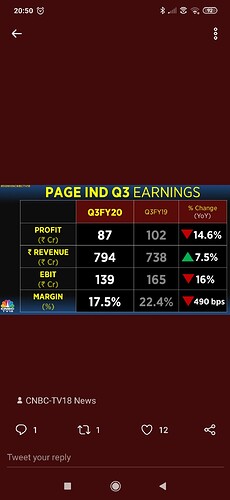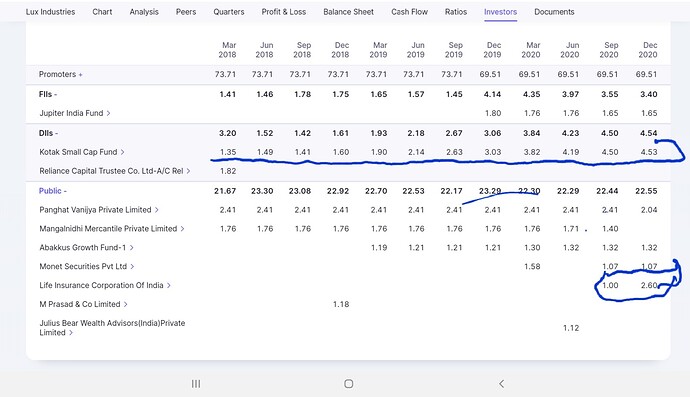LUX INDUSTRIES CONCALL FY20
The company was growing at a healthy rate before they had to shut down the plans for the last few days of the quarter. Loss of revenue and hence impacted the bottom-line. Plant operations resumed from May.
Despite hurdles, better operating matrices. Supply chain aspect – largest distribution network within the industry with strong presence in North, East and Western parts of the country. With the ease in lockdown conditions, good demand in rural and semi urban areas.
Extremely fragmented industry with multiple small players with limited financial resources. Bound to be a consolidation in the industry which will benefit the company in the short and long term both. The company expects to grab market share from the unorganized sector.
Focus is to constantly shorten the working capital cycle and improve CFO´s. Working capital cycle has reduced since September. Aim is to reduce the WC further.
Proposal to merge JM and Ebell Fashions Pvt Ltd with Lux Industries to be completed as soon as possible. No concrete date provided. Merger will strengthen the position and fulfill financial objective in terms of strength and efficiency of BS. Long term value creation.
Not for COVID, revenue growth would have been 8% for the quarter, EBITDA 6% and PAT 22%.
Minimal impact on Q1 since the company restarted operations in May, revenues to be impacted somewhere between 5-12%. Good traction in domestic market in May and June. Revenues to be affected due to exports.
Revenue for Q4 288cr vs 391.8cr. Fall of about 26%. EBITDA 47.7cr vs 64.6cr, maintain EBITDA margin and 16.5%. PAT 28.8cr vs 36.6cr. PAT margins 10.3%, showing an improvement of 90bps in same quarter last year.
JM group quarterly revenue of 80cr while Ebell posted rev of 60cr.
Yearly performance, rev stood at 1209.9cr vs 1216.5cr. Rev remained flat due to impact of plant shutdown due to COVID. Sales and marketing expenses 89cr approximately 7.36% of rev. Invested 566cr in the plant across 8 years ending FY20. EBITDA 190cr vs 187cr, growth of 2%. EBITDA margin improved by 33bps - 15.7% vs 15.4%. PAT 122.5cr vs 98.8cr growth of 24%. PAT margin 10.1% improvement of 200bps.
JM yearly rev 309cr, Ebell 271cr. Group turnover around 1790cr. Group EBITDA 270cr.
ROCE 27.8% ROE 24.7% NET DEBT TO EQUITY 0.3.
Export is 135cr which is same as last year. Domestic 1075cr.
Net distribution has been the same as last year. Some distributors added while some retired.
Eastern 27% Northern 35% Western 19% Central 16% remaining South.
Degrowth in Q4 because the company was not able to shift the orders to the wholesale channel.
Impact of lockdown is less than the industry because even though the company was not able to sell, the consumption of the product had not stopped even for a single day. Dealers and distributors are paying upfront money for the products they are purchasing because they are seeing entire sales happening. Credit in this system has gone down substantially. Company has been taking upfront money from the distributors and distributors have been taking upfront money from the retailers. Entire supply chain right now is going on a hand to mouth basis, so demand in current quarter is very good.
Products are not cyclical purchase. Recurring purchase. People don´t have a habit of buying in bulk, they buy as and when required. Continuous purchase and demand.
Out of the 2.5-2.75 lakh outlets, a bulk of the retail counter are in non-urban areas and even during lockdown all of them were more or less operational. In the rural belt, a lot of kirana stores have also started selling the products. Hoping to achieve good sales figure for Q1.


